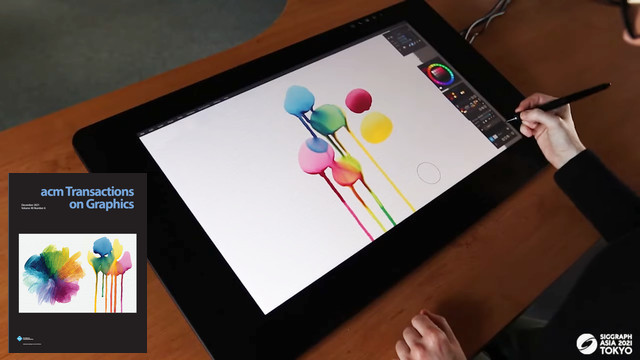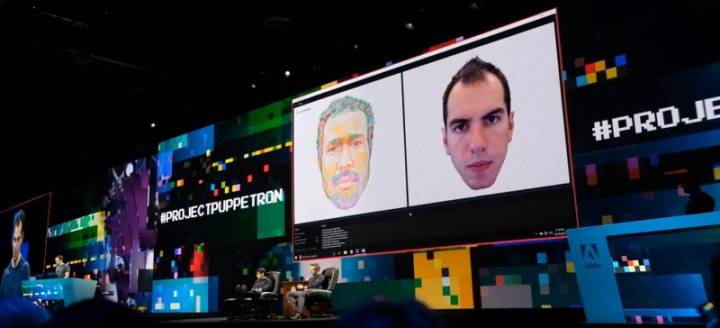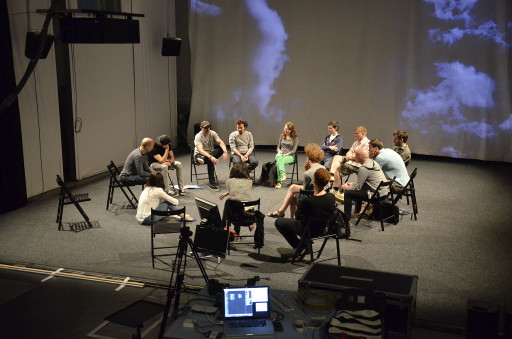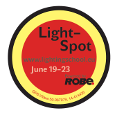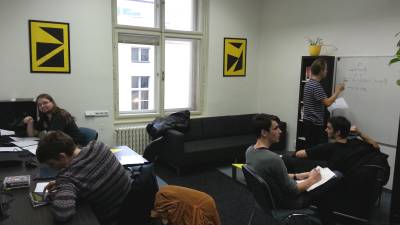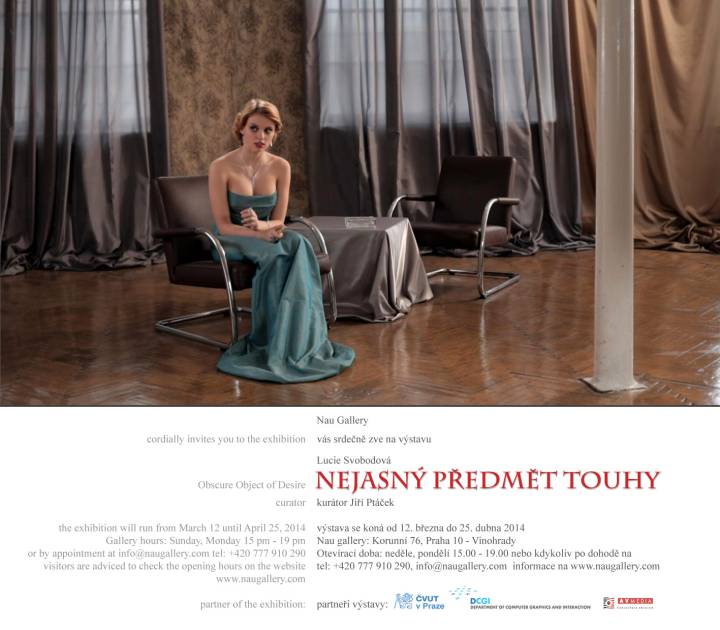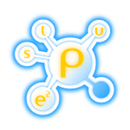- Česky (cs)
- English (en)
Latest Events
Best presentation at CESCG 2023
Two of our students presented their work at the Central European Seminar on Computer Graphics (CESCG 2023). Matěj Sakmary presented a paper called Real-time Rendering of Atmosphere and Clouds in Vulkan, Daniel Gruncl a paper entitled Scatterplot Visualization of Hierarchically Clustered Data Points.
Matěj Sakmary has been awarded the Best Presentation and the 2nd Best Paper awards. The awarded paper was based on his bachelor thesis supervised by our member Jaroslav Sloup. Congratulations!
Best presentation at CESCG 2022
Our student Vojtěch Tomas has been awarded for the Best Presentation and 2nd Best Paper of the student conference CESCG 2022. The awarded paper was a part of her diploma thesis supervised by our member David Sedláček.
The conference was also attended by Michal Hvězda with the paper Dynamic Diffuse Global Illumination: Implementation and Evaluation.
DCGI at SIGGRAPH Asia 2021
DCGI will present two full papers at SIGGRAPH Asia 2021:
- Sochorová & Jamriška: Practical Pigment Mixing for Digital Painting
- Polášek et al.: ICTree: Automatic Perceptual Metrics for Tree Models
IT4Innovations Special Award for Ondřej Texler
On September 30, 2021, our Ph.D. student Ondřej Texler received IT4Innovations Special Award for his successfully defended dissertation Example-based Style Transfer of Hand-drawn Content in the Joseph Fourier Award competition organized annually by Atos in cooperation with the French Embassy in Prague. Ondřej received 50,000 hours of computing time at the national supercomputer center IT4Innovations. Congratulations!
DCGI at Eurographics 2021
DCGI researchers presented a full paper and STAR at Eurographics 2021 (Vienna, Austria):
- Futschik et al.: STALP: Style Transfer with Auxiliary Limited Pairing
- Meister et al.: A Survey on Bounding Volume Hierarchies for Ray Tracing
Best paper at CESCG 2021
Our student Giang Chau Nguyenová has been awarded for the 2nd Best Paper of the student conference CESCG 2021:
The awarded paper was a part of her diploma thesis supervised by our member Jiří Bittner.
Ondřej Texler in BBC News Arabic
Ondřej Texler, a PhD student of Prof. Daniel Sýkora, presented his scientific results in BBC News Arabic.
Ondřej introduced his novel methods published in 2020 (SIGGRAPH, Computer Graphics Forum):
The interview has been translated from English to Arabic, thus you can enhance your language abilities. Enjoy! 
Lightdrum under U.S. patent
Lightdrum, a portable device for exact measuring of surfaces (textures) under varying lighting, invented by Prof. Vlastimil Havran, and designed as a functional prototype by a group of five researchers from the Faculty of Electrical Engineering and the Faculty of Mechanical Engineering, has been patented in the USA.
The Lightdrum is currently patented in five countries - Czechia, France, Germany, Great Britain, and USA. Patent is pending in Japan and South Korea. The authors believe that a company which could produce their device under a license will appear soon.
DCGI at SIGGRAPH Asia 2020
DCGI will present a full paper at SIGGRAPH Asia 2020:
- Dvorožňák et al.: Monster Mash: A Single-View Approach to Casual 3D Modeling and Animation
SIGGRAPH Real-Time Live! Best in Show Award
Our paper Interactive Video Stylization Using Few-Shot Patch-Based Training won Best in Show Award at SIGGRAPH Real-Time Live!
The main presenter was Ing. Ondřej Texler, a Ph.D. student of Prof. Daniel Sýkora.
DCGI at SIGGRAPH 2020
DCGI will present a full paper at SIGGRAPH 2020:
Best presentation at CESCG 2020
Our student Tomáš Bubeníček has been awarded for the Best Presentation of the student conference CESCG 2020:
The awarded paper was a part of his diploma thesis supervised by our member Jiří Bittner.
DCGI provides its computer lab to fight against COVID-19
During the suspension of contact education, we connected the computers and GPUs from our computer lab to the Folding@home project. The project uses distributed computing to simulate protein dynamics and now it runs many simulations needed for the fight with the COVID-19 disease.
The computers in the lab are equipped with NVIDIA 1070 Ti GPUs and the total computing power dedicated to the Folding@home project is up to 64,8 TFlops (GPU) and 1,7 TFlops (CPU).
Thanks to our CG&A reviewers
One of the top computer graphics journals, IEEE Computer Graphics and Applications, expressed thanks to its reviewers. We are proud that two members of our group, Bedrich Benes and Jiri Zara, belongs to them.
Invited Talk - Ariel Shamir - The Face Of Art: Landmark Detection & Geometric Style in Portraits
 | Speaker: Ariel Shamir (IDC Herzliya, Israel) Date: November 19, 2019 10:45 Place: ČVUT FEL, room KN:E-112 (Karlovo náměstí 13, Praha 2) |
Abstract: Neural networks abilities have been utilised in many fields in science and engineering. Recently, they have also been used in Art and design to stylise photographs guided by artworks of various artists. However, such stylisation mostly concentrates on the texture and the colour of the artworks. In this work we try to capture the Geometric style of artists using neural networks. We concentrate on portraits and propose a new method for landmark detection in paintings that allow us to analyse and capture geometric deformations in face paintings, and define a geometric style for artists. We demonstrate our technique by creating average portraits for Artists as well as defining a geometry-aware portrait stylisation algorithm. This work was published in SIGGRAPH 2019 and is joint work with Jordan Yaniv and Yael Newman. See http://www.faculty.idc.ac.il/arik/site/foa/face-of-art.asp
Bio: Ariel Shamir is the Dean of the Efi Arazi School of Computer Science at the Interdisciplinary Center in Israel. He received his Ph.D. in computer science in 2000 from the Hebrew University in Jerusalem. He spent two years as PostDoc at the University of Texas in Austin. Shamir has numerous publications and a number of patents. He is currently an associate editor for ACM Transactions on Graphics, Graphical Models and Computational Visual Media, and was an associate editor for Computers and Graphics journal (2010-2014), IEEE Transactions on Visualization and Computer Graphics (2015-2017), He also served on the program committee of many leading international conferences, including SIGGRAPH, SIGGRAPH Asia, and Eurographics. Shamir was named one of the most highly cited researchers on the Thomson Reuters list in 2015. He has a broad commercial experience consulting various companies including Disney research, Mitsubishi Electric, PrimeSense (now Apple), Verisk and more. Shamir specializes in geometric modeling, computer graphics, image processing and machine learning. He is a member of the ACM SIGGRAPH, IEEE Computer, AsiaGraphics and EuroGraphics associations.
Invited Talk - Adrien Bousseau - OpenSketch: A Richly-Annotated Dataset of Product Design Sketches
 | Speaker: Adrien Bousseau (INRIA Sophia-Antipolis, France) Date: November 19, 2019 10:00 Place: ČVUT FEL, room KN:E-112 (Karlovo náměstí 13, Praha 2) |
Abstract: Product designers extensively use sketches to create and communicate 3D shapes and thus form an ideal audience for sketch-based modeling, nonphotorealistic rendering and sketch filtering. However, sketching requires significant expertise and time, making design sketches a scarce resource for the research community. We introduce OpenSketch, a dataset of product design sketches aimed at offering a rich source of information for a variety of computer-aided design tasks. OpenSketch contains more than 400 sketches representing 12 man-made objects drawn by 7 to 15 product designers of varying expertise. We provided participants with front, side and top views of these objects, and instructed them to draw from two novel perspective viewpoints. This drawing task forces designers to construct the shape from their mental vision rather than directly copy what they see. They achieve this task by employing a variety of sketching techniques and methods not observed in prior datasets. Together with industrial design teachers, we distilled a taxonomy of line types and used it to label each stroke of the 214 sketches drawn from one of the two viewpoints. While some of these lines have long been known in computer graphics, others remain to be reproduced algorithmically or exploited for shape inference. In addition, we also asked participants to produce clean presentation drawings from each of their sketches, resulting in aligned pairs of drawings of different styles. Finally, we registered each sketch to its reference 3D model by annotating sparse correspondences. We provide an analysis of our annotated sketches, which reveals systematic drawing strategies over time and shapes, as well as a positive correlation between presence of construction lines and accuracy. Our sketches, in combination with provided annotations, form challenging benchmarks for existing algorithms as well as a great source of inspiration for future developments. We illustrate the versatility of our data by using it to test a 3D reconstruction deep network trained on synthetic drawings, as well as to train a filtering network to convert concept sketches into presentation drawings. We distribute our dataset under the Creative Commons CC0 license: https://ns.inria.fr/d3/OpenSketch/
Bio: Adrien Bousseau is a researcher at Inria Sophia-Antipolis in the GraphDeco research group. He did his PhD at Inria Rhône-Alpes and his postdoc at UC Berkeley. He also did several internships at Adobe Research. Adrien does research on image creation and manipulation, with a focus on drawings and photographs. Most notably he did some work on image stylization, image editing and relighting, vector graphics and sketch-based modeling. He received one of the three Eurographics 2011 PhD award for his research on expressive image manipulations and a young researcher award from the French National Research Agency (ANR) for his work on computer-assisted drawing. He received an ERC Starting Grant to work on drawing interpretation for 3D design.
DCGI at SIGGRAPH 2019 and Eurographics 2019
DCGI will present a full paper at SIGGRAPH 2019 (Los Angeles, USA):
- Jamriška et al.: Stylizing Video by Example
and two full papers at Eurographics 2019 (Genoa, Italy):
Invited Talk - Eduard Gröller - A Matter of Scale
 | Speaker: Eduard Gröller (TU Wien, Austria) Date: June 22, 2018 11:00 Place: ČVUT FEL, lecture room KN:E-301 (Karlovo náměstí 13, Praha 2) |
Abstract: Scale and scalability have been recurring topics in visual computing. Visual computing uses computer‐supported, interactive, visual representations of (abstract) data to amplify cognition. In recent years data complexity concerning volume, veracity, velocity, and variety has increased considerably. Multiscale models, e.g., from structural biology, require multiscale dynamic color mapping with sometimes overlapping or contradicting colors. We present a technique, which adaptively, based on the current scale level, nonlinearly and seamlessly adjusts the color scheme to depict or distinguish the currently best visible structural information. Data‐sensitive navigation for user‐interface elements is presented. The approach re-scales and normalizes user input according to visual change, and also visually communicates this re-scaling and normalization. In this way, output‐sensitive interactions can be realized. Another example deals with multiscale visualization and scale-adaptive modification of DNA nanostructures. This new way of observing, interacting with, and creating DNA nanostructures enables domain experts to approach their work in any of the available semantic abstraction levels, supporting both low-level manipulations and high-level visualization and modifications. Research challenges and directions with respect to scale and scalability are sketched at the end of the talk.
Bio: Eduard Gröller is professor at the Institute of Visual Computing & Human-Centered Technology ( VC+HCT), TU Wien, Austria, and adjunct professor of Computer Science at the University of Bergen, Norway. His research interests include computer graphics, visualization, and visual computing. He is heading the visualization group at VC+HCT. The group performs basic and applied research in all areas of visualization He is a scientific proponent and key researcher of the VRVis research center. The center performs applied research in visualization, rendering, and visual analysis. Dr. Gröller has been chief editor of the Journal Computer Graphics Forum in the period 2008-2011. He became a fellow of the Eurographics association in 2009. He is the recipient of the Eurographics 2015 Outstanding Technical Contributions Award.
Invited Talk - TU Delft: Electronic Partners for navigation habits support
Presenters: Pietro Pasotti, Catholijn Jonker (Interactive Intelligence, TU Delft)
Date: November 14, 2017 4:30 PM - 6:00 PM
Place: ČVUT FEL, lecture room KN:E-301 (Karlovo náměstí 13, Praha 2)
Annotation:
With the rise of AI and Data Science supportive technology increasingly takes decisions on our behalf, such as which data to share with whom or who to contact if help is needed. In the CoreSAEP project (lead by Dr. M. Birna van Riemsdijk - TU Delft) we develop theory and technology for creating software that understands and adapts to our norms and values in taking such decisions, which we call Socially Adaptive Computing. In this presentation we focus on one such agent, called HabINT, that aims at supporting people in their daily activities. We give an overview of the knowledge representation formalism that HabINT uses to reason about norms, values, and habitual behaviour. The Naviterier project at the HCI Center, Department of Computer Graphics and Interaction in Prague aims at supporting visually impaired people in their navigation-related tasks developing dedicated software. In the presentation, we discuss how to integrate the technology from both groups to provide even stronger support for visually impaired people even if they develop mental impairments related to aging.
About presenters:
Prof. Catholijn Jonker is a full professor of Interactive Intelligence at the Faculty of Electrical Engineering, Mathematics and Computer Science of the Delft University of Technology. Catholijn is EurAI Fellow since 2015, and EurAI board member since 2016, EurAI is the European Association for Artificial Intelligence. She is a member of the Koninklijke Hollandsche Maarschappij der Wetenschappen and of the Academia Europaea. Her publications address cognitive processes and concepts such as negotiation, teamwork and the dynamics of individual agents and organizations. In all her research lines Catholijn has adopted a value-sensitive approach. In particular, she works towards intelligent agents that can interact with their users in value-conflicting situations when also meta-values no longer solve the situation.
Pietro Pasotti is a PhD candidate in the Interactive Intelligence group at the Technical University of Delft. He has been working on interactive agents for habit supports and knowledge structures for human behaviour representation.
Jakub Fišer at Adobe MAX 2017
Our recently graduated Ph.D. student Jakub Fišer received an excited response while presenting results of his research at prestigious Adobe MAX 2017 show in Las Vegas (held on October 16-20, 2017).
See video recordings of his session:
Awards for Bachelor and Master Students
Awards for Bachelor and Master Students supervised by members of our department in the years 2014-2016.
Opening of the Czech Innovation Festival 2017 in Berlin
 | Two presentations, given by prof. Jiří Žára and prof. Ivan Wilhelm (Charles University, ELI Beamlines), introduced the Czech Innovation Festival organized by Czech Center in Berlin in June 22-24, 2017.  |
Hattrick of Prof. Sýkora's research group (@SIGGRAPH 2017)
Research group of Prof. Daniel Sýkora achieved a great success - their three full technical papers have been accepted to the most prestigious computer graphics conference, SIGGRAPH 2017. To present three papers at SIGGRAPH in one year is a unique goal which confirms a strong position of Prof. Sýkora's team among the best research groups worldwide.
We congratulate and wish similar results also in next years!
Invited Talk - Tobias Ritschel - Computing the Best Image Possible
 | Speaker: Tobias Ritschel (University College London, UK) Date: May 30, 2017 17:00 Place: ČVUT FEL, lecture room KN:E-127 (Karlovo náměstí 13, Praha 2) |
Abstract:
Opinions vary on what is the best image a machine can synthesize. In this talk I will discuss some possible answers: First, physical accuracy has been a classic and quantifiable objective, and I will give an example of a technique to robustly compute unbiased images. Another important aspect to discuss is computational efficiency. I will explain how rasterization abilities of modern graphics hardware can be used to introduce global illumination at interactive frame rates. Ultimately, images are made to be perceived by humans, where it is not so easy to say which image is „better“, e.g. when comparing to a reference. I will discuss the particular challenge of computing what is the best (stereo) image using a perceptual model. If the „best“ image only exists in the mind of user, computing this image is an even more substantial challenge. I will discuss examples of using Internet image collections to guide users when realizing what they imagine. Finally, images have commonly been synthesized from complete information. I will discuss some alternatives, where only incomplete information is available and extrapolation from sparse example images is made to achieve better coverage by many images.
Neuron Award for Daniel Sýkora
On May 24, 2017 at Neuron Awards gala, The Neuron Award for Promising Young Scientists was awarded to prof. Daniel Sýkora.
Three talks at the Czech VR Fest
| In May 24 and 25, 2017, three members of the DCGI presented their talks at the Czech VR Fest |  |
|---|
- Jiri Zara – History of VR & AR
- Roman Berka – Case study: Intermedia in VR
- David Sedlacek – Case study: Education in AR
 |
|---|
Invited Talk - Stefan Leijnen - Utilizing Deep Learning as a Tool for Creativity
 | Speaker: Stefan Leijnen (Amsterdam University of Applied Sciences, Netherlands) Date: May 26, 2017 13:30 Place: ČVUT FEL, lecture room KN:E-301 (Karlovo náměstí 13, Praha 2) |
Abstract:
Recent years have seen a number of breakthroughs that indicate a renewed interest in the possibilities of creative machines. Game-playing agents developed by Google Deepmind are capable of learning surprisingly original solutions. Deep learning allows anyone to make paintings in the style of famous artists. Other computational tools are now used to inspire and guide human designers. In this talk, we will look at examples of creative machine learning, consider to what extent they qualify as being creative, and discuss what additional steps would be necessary for artificial creativity.
About the speaker:
Stefan Leijnen is lecturer and researcher of artificial intelligence at the Amsterdam University of Applied Sciences. His primary research interest is in understanding how novelty arises from dynamical systems, particularly in neural networks. More generally, he is interested in generative computational methods, deep learning and epistomology. He has recently founded the Asimov Institute, an independent research organization aiming to develop technological solutions for creativity and control of machine learning.
Two talks from Purdue university (USA)
Talk Nr. 1 - Alejandra J. Magana: Opportunities and Challenges of Visuohaptic Simulations for Conceptual Learning
 |
|---|
Abstract:
While it is clear that the use of computer simulations has a positive effect on
learning when compared to instruction without computer simulations, there is still
room for improvement to fully realize their benefits for learning. Haptic
technologies can fulfill the educational potential of computer simulations by adding
the sense of touch. Visuohaptic simulations may not only help students visualize
abstract or invisible concepts, but they may also have the capability of enriching the
learning experience and enhancing retention. Our argument is based on the idea
that haptic technology can support embodied learning by grounding movements
during the learning process as learners manipulate and interact with virtual objects
via the haptic interface. Still, previous work that has compared visual simulations
versus visuohaptic simulations has not reported conclusive results.
This research seminar provides an overview of a design-based research program that investigates effectiveness of the use of visuohaptic simulations to support the understanding of difficult concepts in science. We explored a sequencing approach to address the possibility of visual information undermining tactile information, when presented together. Our preliminary studies have shown promising results.
 | Alejandra J. Magana is an Associate Professor in the Department of Computer and Information Technology with a courtesy appointment at the School of Engineering Education at Purdue University. Her research program investigates how model-based cognition in Science, Technology, Engineering, and Mathematics (STEM) can be better supported by means of computing tools. |
Talk Nr. 2 - Bedrich Benes: Modeling Plant Life in Computer Graphics
 |
|---|
Abstract:
Synthesizing natural scenes with realistic vegetation has always been an interesting research topic in computer graphics. As frequent objects in our daily life, vegetation is required in almost all virtual sceneries, ranging from single plants and trees to wide outdoor ecosystems. The human visual system is perfectly trained to see any imperfections and irregularities. Therefore, the appearance and the inhomogeneous structure of plants still pose many challenges to computer graphics researchers. Although rich and detailed virtual environments become popular in applications like games, movies or urban visualization, storing and transmitting as well as modeling or rendering such objects with full detail is beyond the capabilities even of modern graphics hardware. Figure 1 shows a small forest with large amount of detail modeled through a modern reconstruction algorithm. This talk will cover several latest algorithms and techniques in modeling vegetation in computer graphics. In particular, we will focus on advances in 1) procedural and inverse-procedural modeling, 2) biologically-based approaches, and 3) user-assisted approaches for vegetation modeling.
 | Bedrich Benes is a professor of Computer Graphics Technology at Purdue University and a director of the High Performance Computer Graphics Laboratory. His area of research is in procedural and inverse procedural modeling and simulation of natural phenomena and he has published over 100 research papers in the field. Dr. Benes has collaborated with the National Science Foundation, NASA, Adobe Research, Intel, Siemens, Samsung, Department of Energy, and Ford Inc., among others. He has worked as IPC member of various conferences including Siggraph/Siggraph Asia (4x), Eurographics (5x), and he is a papers chair of Eurographics 2017. He also works as associate editor of Computer Graphics Forum and Computers & Graphics. His graduate students work in Adobe, Google, Microsoft, Nvidia, Samsung, and Siemens. |
Jiri Zara - Eurographics Fellow
At the General Assembly of the Eurographics Association in Lyon, prof. Ing. Jiří Žára, CSc. has been awarded as Eurographics Fellow for his activities in education, research, and publicity in the field of Computer Graphics.
Best video and presentation at CESCG 2017
Our student Antonín Šmíd has been awarded by the 3rd prize for the Best Presentation and Best Video of the student conference CESCG 2017:


The awarded paper was a part of his bachelor thesis supervised by our member Jiří Bittner.
DCGI at SIGGRAPH 2017
DCGI will present three full papers at SIGGRAPH 2017 (Los Angeles, USA):
- Fišer et al.: Example-Based Synthesis of Stylized Facial Animations
- Dvorožňák et al.: Example-Based Expressive Animation of 2D Rigid Bodies
- Lukáč et al.: Nautilus: Recovering Regional Symmetry Transformations for Image Editing
DCGI at Eurographics 2017
DCGI will present a full paper at Eurographics 2007 (Lyon, France):
J. Hendrich, D. Meister, J. Bittner: Parallel BVH Construction using Progressive Hierarchical Refinement
Dean's Award for the dissertation thesis for our PhD students
On Wed 11. 1. 2017, two our PhD students received Dean's Award for the prestigious dissertation thesis in the field of Information Science and Computer Engineering.
 |  |
|
| Ing. Michal Lukáč, Ph.D. | Ing. Michal Hapala, Ph.D. | |
| award winning thesis | award winning thesis | |
| Example-based Creation of Digital Imagery | Data Structures and Algorithms for Interactive Ray Tracing | |
| supervisor: prof. Jiří Žára | supervisor: prof. Vlastimil Havran | |
| supervisor-specialist: prof. Daniel Sýkora | ||
| current employer | current employer |
|
| Adobe Research | Warhorse Studios | |
 |  |
20th Student scientific seminar User Interfaces at HTW Dresden
In the days 24.11 and 25.11. 2016 20th student scientific seminar User Interfaces was held in the building of HTW Dresden (University of Applied Sciences in Dresden).
Students delivered talks about their results achieved in scientific projects. Their form of participation were either thesis (BSc. or MSc.) or student projects (programme of the workshop is here). Main topics discussed in the seminar were user interfaces and computer graphics issues. Workshop organization was shared by Department of Computer Graphics and Interaction at FEL CTU Prague and Faculty of Informatics HTW Dresden. The seminar has quite a long tradition and one of aims of the seminar is to attract attention of students (both BSc.and MSc. ones) towards scientific work. The assumption is that an integral part of scientific work is presentation of the results achieved to international audience in English. A bunch of students who participated in the workshop in the past entered PhD study later on where they continued in many cases in research they presented during the workshop.
After 20 years it is possible to make positive evaluation of the workshop. The scientific quality of talks is steadily increasing as well as the ability of students to communicate in English. An effort has been made to conform the format of the workshop in such a way that it should be similar to format of standard international workshops. E.g. in 2015 Proceedings were published – the Proceedings had a form of abstracts where information about each contribution was presented. Proceedings from this year will have a form of Technical report published by HTW Dresden where each talk will be presented in the form of extended abstract. In general it is possible to say that students evaluate the event as interesting and beneficial one.
In the workshop participated the following students from FEL:
- BSc. students: Gintner Vojtěch, Szczurková Jana, Riganová Michaela
- MSc. students: Novák Vojtěch, Dzurenko Martin
- PhD. students: Kutíková Anna, Balata Jan
Proceedings can be donwloaded here.
 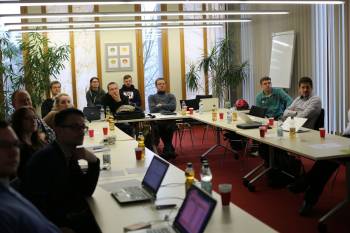 |
|---|
StyLit on Adobe MAX 2016
Algorithm StyLit developed at our department was presented on November 3, 2016, 6pm PDT at Adobe MAX conference in San Diego (see the video from the audience and the entire recording). During this presentation a release of interactive demo was announced for those who are interested to try StyLit in practice.
Interview with Adam Sporka in the Score Magazine
Score, a traditional Czech printed magazine on video games, published an interview with Adam Sporka, a member of our department, about his work on the music for upcoming video game Kingdom Come: Deliverance. The piece is a part of the series of interviews with members of Warhorse Studios.
Article in Cartoon Brew
Popular on-line magazine Cartoon Brew published an article about StyLit algorithm which was developed by members of DCGI: J. Fišer, O. Jamriška, M. Lukáč and D. Sýkora.
DCGI at SIGGRAPH 2016
DCGI will present full paper at SIGGRAPH 2016 (Anaheim, USA):
StyLit: Illumination-Guided Example-Based Stylization of 3D Renderings
The paper was selected also for SIGGRAPH 2016 - Technical Papers Trailer.
Invited Talk - Eduard Gröller - Visual Computing and Comparative Visualization
 | Speaker: Eduard Gröller (TU Vienna, Austria) Date: April 15, 2016 11:00 - 12:00 Place: ČVUT FEL, lecture room KN:E-301 (Karlovo náměstí 13, Praha 2) |
Abstract:
Visualization and Visual Computing use computer-supported, interactive, visual representations of (abstract) data to amplify cognition. In recent years data complexity and variability has increased considerably. This is due to new data sources as well as the availability of uncertainty, error and tolerance information. Instead of individual objects entire sets, collections, and ensembles are visually investigated. This raises the need for effective comparative visualization approaches. Visual data science and computational sciences provide vast amounts of digital variations of a phenomenon which can be explored through superposition, juxtaposition and explicit difference encoding. A few examples of comparative approaches coming from the various areas of visualization, i.e., scientific visualization, information visualization and visual analytics will be treated in more detail. Analysis techniques which combine visualization and simulation to assist decision making in flooding scenarios, indoor lighting design and city planning will be discussed. Given the amplified data variability, comparative visualization techniques are likely to gain in importance in the future. Research challenges, directions, and issues concerning this innovative area are sketched at the end of the talk.
DCGI receives the NVIDIA GPU Research Center status
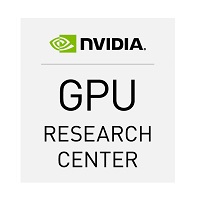 | Department of Computer Graphics and Interaction has been awarded the status of NVIDIA GPU Research Center at the beginning of 2016. Status award will benefit us receiving pre-release access to hardware and software (e.g. Tesla K40) to be used for our reasearch in areas of rendering and advanced image manipulation. GPU Research Center status is shared with Faculty of Nuclear Sciences and Physical Engineering. |
Adam Sporka's talk at GDS 2015: Adaptive Music in Kingdom Come: Deliverance
The music in our game responds to the actions of the player. It goes from peaceful to agitated when the player is attacked by enemy NPC, from neutral to dark when entering a cave, etc. The challenge is to respond swiftly, make the transitions between parts of the soundtrack as seamless as possible (maintain the correct voicing and harmonic progressions), and above all, have diverse yet consistent soundtrack.
 |
|---|
Best Session Award at CogInfoCom 2015
Our member Zdeněk Míkovec has been awarded by the The Best Session Award at the 6th IEEE International Conference on Cognitive Infocommunications 2015 for organizing the session entitled Accessibility of CogInfoCom Systems.
Test-of-Time 2006 Award at HPG 2015
Our member Vlastimil Havran has been awarded by the Test-of-Time 2006 Award at the HPG 2015 conference for the most cited paper: On building kd-Trees for Ray Tracing, and on doing that in O(N log N)
The summer school PULSEE led by Bozkurt Karasu started on 8th June 2015
The summer school PULSEE started today in Institute of intermedia. It is led by Bozkurt Karasu (MIT, Cambridge, USA). The intensive workshop will be finished by public presentation of students' work on 19th June form 2pm in IIM. The presentations will continue on theatre board of brodthers Formans - “Tajemství” where also afterparty will be held. The students and professionals working in the area of intermedia will meet there. You all are invited!
Corresponding links:
DCGI at SIGGRAPH 2015 and Eurographics 2015
DCGI will present 2 full papers at SIGGRAPH 2015 (Los Angeles, USA):
LazyFluids: Appearance Transfer for Fluid Animations
Decomposing Time-Lapse Paintings into Layers
and 3 full papers at Eurographics 2015 (Zurich, Switzerland):
Light Chisel: 6DOF Pen Tracking
Best paper and presentation at SCCG 2015
Our member Ladislav Čmolík has been awarded by the 1st prize for the Best Paper and by the 2nd Best Presentation of the conference SCCG 2015 for the paper Automatized Summarization of Multiplayer Games:
Best paper, presentation, and video at CESCG 2015
Our student Tomáš Pastýřík has been awarded by the 1st prize for the Best Paper and Best Presentation of the student conference CESCG 2015:
The awarded paper Order Independent Transparency with Non-local Opacity Modulation for 3D Meshes was a part of his diploma thesis supervised by our member Ladislav Čmolík.
The 1st prize for the Best Video was awarded to our student Daniel Mikeš:
He presented a paper Real-time Water Simulation with Wave Particles on the GPU, which originate from his diploma thesis supervised by our member Jiří Bittner.
EuroNews Documentary
EuroNews broadcasted a short documentary about successful cooperation of DCGI with movie industry.
Triangle -- New Student Workroom and Lounge
DCGI opened Triangle, a workroom and lounge for students working on bachelor and diploma theses supervised by DCGI's faculty members. It's a nice and comfortable environment for work on a project, consult the class material with colleagues, do little presentations, or just sit down and have a cuppa or coffee.
Equipment and amenities:
- An i7 machine
- 3 Full HD screens for laptops
- Full HD beamer
- Whiteboard
- Lounge area
- Kitchenette
Open Position! Ray Tracing on Mobile Phones
We offer an open position for one undergraduate or graduate student in a research project dealing with fast construction of data structures for ray tracing on mobile phones. The work will be conducted in cooperation with our partner from abroad and it can also become a topic of a master thesis.
Job Conditions
- Schedule: 1.12. 2014 - 31.10. 2015
- Workload: 80 hours / month
- Salary: 15.000 - 20.000 CZK / month (depending on the results)
Interested students should send their CV, list of subjects studied with grades, example of their own C++ source codes, possible copies of documents showing their strong abilities such as diplomas from contests, and a motivation letter to Jiri Bittner (see the contact below), who can also respond to any questions dealing with the position. The job interviews will be organized in November 2014.
The deadline for sending the application is November 14th, 2014.
Application should be submitted to Jiri Bittner, E-mail: bittner@fel.cvut.cz, http://dcgi.felk.cvut.cz/~bittner.
Invited Talk - Marc Stamminger - Capturing the Real World with Commodity Depth Cameras
 | Speaker: Marc Stamminger (Friedrich-Alexander-University Erlangen-Nuremberg, Germany) Date: November 7, 2014 12:45 - 13:45 Place: ČVUT FEL, lecture room KN:E-301 (Karlovo náměstí 13, Praha 2) |
Abstract:
In this talk I describe methods to capture the real world around us using cheap commodity 3D-cameras such as the Microsoft Kinect or any of its successors. These cameras deliver 30 depth images per second, but each at only low quality. Yet, with the fusion of such a depth image stream, 3D-scans of decent quality can be made. I will describe extensions that make it possible to scan large scenes and show results from scanning sessions in an excavation site in Turkey. Another extension handles the realtime capturing of deformable objects such as faces, hands, or bodies. Finally, I will show a very recent new realtime approach combining depth and RGB-data to increase the resolution of the captured geometry.
Invited Talk - Stefan Gumhold - Object Pose Estimation and Tracking with 3D Object Coordinates
 | Speaker: Stefan Gumhold (TU Dresden, Germany) Date: October 24, 2014 12:45 - 13:30 Place: ČVUT FEL, lecture room KN:E-301 (Karlovo náměstí 13, Praha 2) |
Abstract:
This work addresses the problem of estimating and tracking the 6D Pose of specific objects from a single RGB-D image. We present a flexible approach that can deal with generic objects, both textured and texture-less. The key new concept is a learned, intermediate representation in form of a dense 3D object coordinate estimate paired with a dense object labelling. Random forests are exploited to predict 3D object coordinates and object probability from local image patches. We pair this discriminative estimate with a generative explanation of the RGB-D image in an energy functional that is robustly minimized with a RANSAC like approach. Tracking is based on the particle filter framework for which we designed efficient proposal distributions in order to efficiently sample the six dimensional parameter space of object poses. The proposed approach allows for real-time tracking and is very robust to changes in lighting and to occlusions.
Best Master's Thesis Award 2014
Our student Vojtěch Krs (on the left side of the photo) has been awarded by the 1st prize for the best master's thesis of the year 2014 in the category “Enterprise Information Systems, other IT works”. The awarded thesis Sculpting in Virtual Reality was supervised by our member, Ondřej Jamriška (on the right side of the photo).
DCGI at SIGGRAPH'14, EGSR'14, and HPG'14
Paper Ink-and-Ray: Bas-Relief Meshes for Adding Global Illumination Effects to Hand-Drawn Characters will be presented at SIGGRAPH 2014!
Paper Color Me Noisy: Example-based Rendering of Hand-colored Animations with Temporal Noise Control was accepted to EGSR 2014!
Paper Massively Parallel Hierarchical Scene Processing with Applications in Rendering will be presented at EGSR 2014!
Paper Efficient Memory Allocator for GPUs was accepted to HPG 2014!
Invited Talk - Michael Guthe - GPU Ray Tracing - Concepts, Advances and Challenges
 | Speaker: Michael Guthe (University of Bayreuth, Germany) Date: June 19, 2014 14:00 - 15:00 Place: ČVUT FEL, lecture room KN:E-301 (Karlovo náměstí 13, Praha 2) |
Abstract:
Due to the immense parallel processing power of modern graphics hardware, ray tracing algorithms and applications on the GPU have emerged. Depsite several architectural challanges, real-time recursive ray tracing has become possible. More sophisticated global illumination algorithms however still pose major challanges for efficient implementations on the GPU. After a short introduction into the programming model and the processing flow of GPUs, recent advances in real-time ray tracing will be discussed. These include acceleration data structures as well as a study of memory access and latency during intersection testing. In this context, the general problem of divergence and approaches to improve thread utilization will also be presented. The talk closes with an overview of techniques to implement more sophisticated global illumination algorithms like path tracing, bi-directional path tracing and Metropolis light transport, while putting an emphasis on the open problems in this field.
Student Research Assistant and PhD students call for application
The application for job positions are in PDF document. The deadline for submitting the document is 18th April 2014.
Lucie Svobodová - Exhibition in Nau gallery
Invited Talk - Bedřich Beneš - Inverse Procedural Modeling
 | Speaker: Bedřich Beneš (Purdue University, USA) Date: December 6, 2013 11:00 - 12:00 Place: ČVUT FEL, lecture room KN:E-301 (Karlovo náměstí 13, Praha 2) |
Abstract:
Procedural modeling has proven to be a powerful set of algorithms and techniques and it has been used for generation of a wide-variety of objects and effects. However, their definition is a tedious and non-intuitive task that is usually done either by experts, or by a trial and error approach. In this presentation, we will show some of our results in the field of inverse procedural modeling where we attempt to find a procedural representation of an existing object or a scene. Various examples of learning models from biology, urban models, and other procedural representations will be presented.
Detailed information about invited speaker and his talk.
Invited Talk - Martin Fuchs - Visual Computing beyond Pictures
 | Speaker: Martin Fuchs (University of Stuttgart, Germany) Date: November 15, 2013 11:00 - 12:00 Place: ČVUT FEL, lecture room KN:E-301 (Karlovo náměstí 13, Praha 2) |
Abstract:
Visual computing encompasses a multitude of subjects which have evolved around a common goal: creating and understanding worlds with pictures. Recently, appearance fabrication has emerged as an exciting topic in visual computing: it addresses how to employ rapid manufacturing techniques in order to build tangible artifacts which have a predefined appearance. In this talk, I will present my contributions to appearance manufacturing, discussing passive reflectance field displays and printed subsurface scattering. Further, I will show how the use of rapid manufacturing techniques for computational photography enables refocusing images after they were taken.
The new navigation system for blind people attracted attention in Paris - inserted on 25.10.2013
Czech engineers have decided to join forces and create a navigation system for the blind that help them move around the city. The project includes the improvement of the mobile navigation, design of a special bracelet that improve the orientation in an unfamiliar environment and at last but not least, the creation of the game communicating with players using touch and heat.
The entire article in czech on tyden.cz
Project web sites on ulab.cz
Video on YouTube
DCGI papers accepted to SIGGRAPH'13, EGSR'13, and CVPR'13
Paper Painting by Feature: Texture Boundaries for Example-based Image Creation was accepted to SIGGRAPH 2013!
Paper Temporally Coherent Adaptive Sampling for Imperfect Shadow Maps was accepted to EGSR 2013!
Paper BRDF Slices: Accurate Adaptive Anisotropic Appearance Acquisition was accepted to CVPR 2013!
DCGI Annual Report 2012 - short version
Short version of DCGI Annual Report 2012 has been published. It will become a part of the faculty annual report.
Best Paper Award at CogInfoCom 2012
Jan Balata, Zdeněk Míkovec, and Pavel Slavík received Best Paper Award at the 3rd IEEE International Conference on Cognitive Infocommunications (held in Košice, Slovakia on 2-5 December 2012) for their paper entitled: Mutual Communication in Navigation of Visually Impaired.
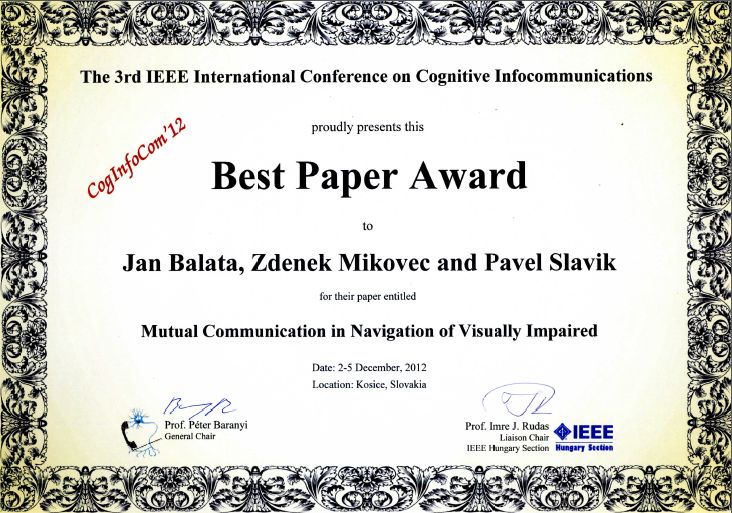
The Chip Tune Music and Light Course in Summer 2012
The Practical Course on Developing Electronic Music Tools and Light Controllers organized in Institute of intermedia.
JOIN THE FANTASTIC ARDUINO TUNING MUSIC WORKSHOP IN SUMMER PRAGUE Under the supervision of the skilled professionals you will find out how to create a real electronic musical instrument using the Arduino prototyping platform. You will enjoy a lot of fun controlling your own synthesizer by MIDI and using it together with large programmable stage lights.
Visit our site: http://pulsee.iim.cz
Follow us on Facebook: https://www.facebook.com/institute.of.intermedia
Registration: By 20 May 2012
Best Paper Award at NPAR 2011
Daniel Sýkora, Mirela Ben-Chen, Martin Čadík, Brian Whited and Maryann Simmons received Best Paper Award (in Animation) at International Symposium on Non-Photorealistic Animation and Rendering in Vancouver, Canada on 5–7 August 2011, collocated with SIGGRAPH 2011 for their paper: TexToons: Practical Texture Mapping for Hand-drawn Cartoon Animations.

Best Presentation Award at CESCG 2011
Our student Jakub Hušek has been awarded by the 1st prize for the Best Presentation of the student conference CESCG 2011. The awarded presentation Multi-touch Table with Image Capturing was part of his diploma work supervised by our member, Miroslav Macík.

Opening of common CTU and HTC mobile laboratory
It was published about our European Project i2home
INVITED TALKS on 18. 1. 2011
10:00 Miloš Šrámek (Austrian Academy of Sciences): Voxelization of geometric objects with sharp details
Voxelization is a sampling process that transforms a continuously defined object into a discrete one represented as a voxel field. The voxel field can be used for rendering or other purposes which often involve a reconstruction of a continuous approximation of the original object. Objects to be voxelized need to fulfill certain representability conditions; otherwise, disturbing artifacts appear during reconstruction. We present a new method for voxelization of solid objects containing sharp details which extends the traditional distance-based voxelization by an a-priori detection of sharp object details and their subsequent modification in such a way that the resulting object to be voxelized fulfills the representability conditions. We exemplify the method by two classes of solid objects that normally contain such sharp details: implicit solids and solids resulting from CSG operations. In both cases, the sharp details are rounded to a specific curvature dictated by the sampling distance.
11:00 Andrej Ferko (Univerzita Komenského v Bratislave): Multidimensional Urban Visions
MUVIS is an extensible platform for online participatory urban planning. MUVIS (Multidimensional Urban Visions) offers for people, local authorities, and investors a dialogue of all participants and in a case study Virtual Petrzalka achieves creation, visualization, and discussing visions and plans. MUVIS offers a recent technology solution and improves current state and approach with explaining new methods to obtain - as optimal as possible - future of our cities.
**SEMESTRALE 2010** - opening of the student art exhibition
On the 14th of October 2010 at 5 p.m. the exhibition of student works will be opened. The exhibition will take place in the hallway at the 3rd floor, E building, Karlovo nam. 13.
Mobile 3D Talking Head wins BEST PAPER AWARD at the SiMPE 2010 Workshop !!!
The paper by Jiří Danihelka, Roman Hák, Lukáš Kencl and Jiří Žára, titled “3D Talking-Head Interface to Voice-Interactive Services on Mobile Phones” receives BEST PAPER AWARD at the 5th Workshop on Speech in Mobile and Pervasive Environments SiMPE (in conjunction with the ACM MobileHCI 2010 conference) on September 7, 2010 in Lisbon, Portugal. Congratulations for a great success at a respected international workshop and a strong achievement for the 3D Mobile Internet team! Many thanks go to Vodafone Foundation Czech Republic for the continuous support of this project.
Best Paper Award at CESCG 2010
Our student Ondřej Jamriška has been awarded by the 1st prize for the Best Paper at the student conference CESCG 2010. The awarded paper Interactive Ray Tracing of Distance Fields was the subject of bachelor thesis supervised by our member, Vlastimil Havran.
Eurographics 2010 Best Paper Award
The authors team Daniel Sýkora, David Sedláček, Sun Jinchao, John Dingliana, and Steven Collins received Günter Enderle Award (Best Paper Award) at prestigious conference Eurographics 2010 for their contribution Adding Depth to Cartoons Using Sparse Depth (In)equalities.

The main author, Daniel Sýkora, after receiving PhD degree (supervisor prof. Žára) moved to Trinity College Dublin where he works as research fellow, David Sedláček is PhD student at CTU in Prague (supervisor prof. Žára).
BBC News on i2home
CTU Team defended successfully i2home project. It was broadcasted by BBC.
Links to these videos you can find here.
BBC News on i2home
BBC News i2home technology
Institute of InterMedia
Institute of InterMedia , which is very closely linked to the Department of Computer Graphics and Interaction (DCGI) was set up as a joint workplace of CTU and Academy of Performing Arts in Prague. Its aim is to create a space for interdisciplinary cooperation among the students of technical school and students of art disciplines. The area of computer graphics and virtual reality is offering a large field for collaboration. Czech TV editors of publicistic programme PORT created one part of this programme dedicated to Virtual reality in which they engaged experts from the appointed workplaces and their colleagues from Masaryk University in Brno. So next step in the promotion of interesting science to the public has been made, which especially today we consider very important. (Roman Berka - the head of IIM.) Czech TV PORT
Microsoft Interoperability Lab at CTU.
CTU-Interoperability Lab (IOL) is the new joint project of CTU fakulty of Electrical Engineering and Microsoft coordinated by Technology Exploration Center(TEC).
The aim of IOL is to create prestigious independent workplace, which could be searched by top experts, institutions and companies dealing with design or developing multi-platform solutions in the Czech Republic and as well abroad. CTU is giving patronage and garantee of independce to this project. On the other hand Microsoft enables practical use of knowledge and research and development results. CTU-IOL is not going to be limited only in cooperation of CTU and Microsoft. In contrary it is completely open to application developers or users, also for commercial and noncommercial organizations. Interoperability Lab
VERITAS project
DCGI is one of the partners in a new VERITAS project granted in the scope of the 7th Framework programme of the EU. VERITAS aims to develop, validate and assess an open framework for built-in accessibility support at all stages of ICT and non-ICT product development, including specification, design, development and testing. The goal is to introduce simulation-based and VR testing at all stages of product design and development into the automotive, smart living spaces, workplace, infotainment and personal healthcare applications areas. This should ensure that future products and services are being systematically designed for all people including those with disabilities and functional limitations.
;;# Person responsible for the page content: Ing. Jaroslav Sloup ;;#






